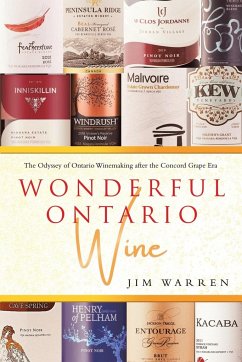For more than a century, the Ontario wine industry had found success producing mainly ports and sherries from American hybrid grapes, but as the 1970s approached, consumer tastes were changing and sales of the higher-alcohol wines were decreasing significantly. A new, low-alcohol refreshment wine named "Baby Duck," produced by Andres winery from native labrusca varieties like Concord, became an overnight sensation, inspiring other wineries to imitate the "pop wine" style through the decade and helping to prop up sales, but overall, imported table wines continued to gain more and more market share. Some were beginning to question the future of the Ontario grape and wine industry. Within another 20 years, the native grapes that had sustained our winemaking for so long would finally be outlawed for use in making table wines in the province and growers would replace them with "preferred" varieties, both French hybrids and Viniferas. These vines, originally brought to the province by Bright's Winery in the 1940s, had gradually increased in vineyard plantings. By the 1970s, they had developed so successfully that they stimulated a re-birth of our entire winemaking, including the development of new boutique wineries like Inniskillin and Chateau des Charmes, who were making wines of much-improved quality and appeal. They would be followed by wave after wave of new wineries, winemakers, and wines. With the dawning of a new millennium, so much had changed in only 30 years that the wine industry could confidently declare that it was now "poised for greatness," and prepared for a remarkable future. "Wonderful Ontario Wine" relates the odyssey of winemaking in the province over the last half-century, examining the challenges faced and the milestones achieved in creating a vibrant, modern industry with a respected appellation system that continues to produce an amazing variety of award-winning wines, from table wines to sparkling and icewines, many made organically or biodynamically. Today, with over 200 wineries throughout the province, Ontario is acclaimed for its world-class grape and wine industry.
Hinweis: Dieser Artikel kann nur an eine deutsche Lieferadresse ausgeliefert werden.
Hinweis: Dieser Artikel kann nur an eine deutsche Lieferadresse ausgeliefert werden.









